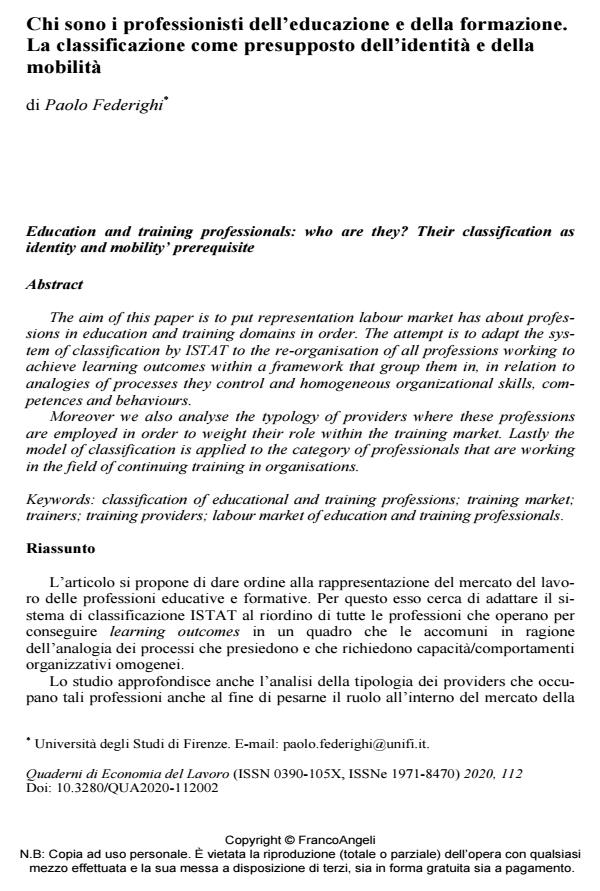Education and training professionals: who are they? Their classification as identity and mobility’ prerequisite
Journal title QUADERNI DI ECONOMIA DEL LAVORO
Author/s Paolo Federighi
Publishing Year 2021 Issue 2020/112
Language Italian Pages 18 P. 9-26 File size 289 KB
DOI 10.3280/QUA2020-112002
DOI is like a bar code for intellectual property: to have more infomation
click here
Below, you can see the article first page
If you want to buy this article in PDF format, you can do it, following the instructions to buy download credits

FrancoAngeli is member of Publishers International Linking Association, Inc (PILA), a not-for-profit association which run the CrossRef service enabling links to and from online scholarly content.
The aim of this paper is to put representation labour market has about profes-sions in education and training domains in order. The attempt is to adapt the sys-tem of classification by ISTAT to the re-organisation of all professions working to achieve learning outcomes within a framework that group them in, in relation to analogies of processes they control and homogeneous organizational skills, com-petences and behaviours. Moreover we also analyse the typology of providers where these professions are employed in order to weight their role within the training market. Lastly the model of classification is applied to the category of professionals that are work-ing in the field of continuing training in organisations.
Keywords: Classification of educational and training professions; training mar-ket; trainers; training providers; labour market of education and training profes-sionals.
Paolo Federighi, Chi sono i professionisti dell’educazione e della formazione. La classificazione come presupposto dell’identità e della mobilità in "QUADERNI DI ECONOMIA DEL LAVORO" 112/2020, pp 9-26, DOI: 10.3280/QUA2020-112002